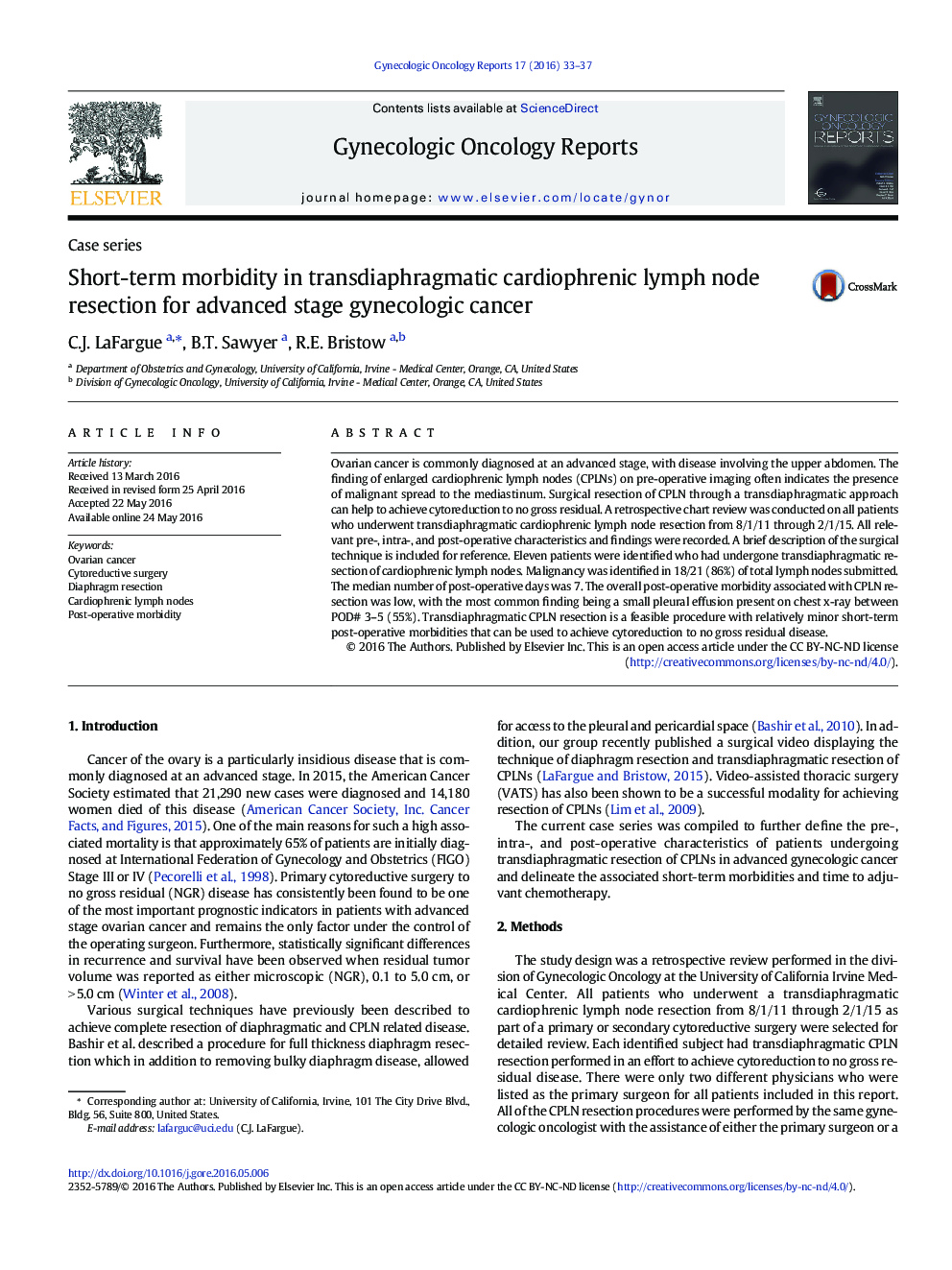| Article ID | Journal | Published Year | Pages | File Type |
|---|---|---|---|---|
| 3948836 | Gynecologic Oncology Reports | 2016 | 5 Pages |
•Pre-operative chest CT can help to identify enlarged cardiophrenic lymph nodes.•The technique of transdiaphragmatic cardiophrenic lymph node resection is described.•Resection of CPLNs aids in achieving cytoreduction to no gross residual disease.•The short-term morbidities associated with the procedure are relatively minor.
Ovarian cancer is commonly diagnosed at an advanced stage, with disease involving the upper abdomen. The finding of enlarged cardiophrenic lymph nodes (CPLNs) on pre-operative imaging often indicates the presence of malignant spread to the mediastinum. Surgical resection of CPLN through a transdiaphragmatic approach can help to achieve cytoreduction to no gross residual. A retrospective chart review was conducted on all patients who underwent transdiaphragmatic cardiophrenic lymph node resection from 8/1/11 through 2/1/15. All relevant pre-, intra-, and post-operative characteristics and findings were recorded. A brief description of the surgical technique is included for reference. Eleven patients were identified who had undergone transdiaphragmatic resection of cardiophrenic lymph nodes. Malignancy was identified in 18/21 (86%) of total lymph nodes submitted. The median number of post-operative days was 7. The overall post-operative morbidity associated with CPLN resection was low, with the most common finding being a small pleural effusion present on chest x-ray between POD# 3–5 (55%). Transdiaphragmatic CPLN resection is a feasible procedure with relatively minor short-term post-operative morbidities that can be used to achieve cytoreduction to no gross residual disease.
